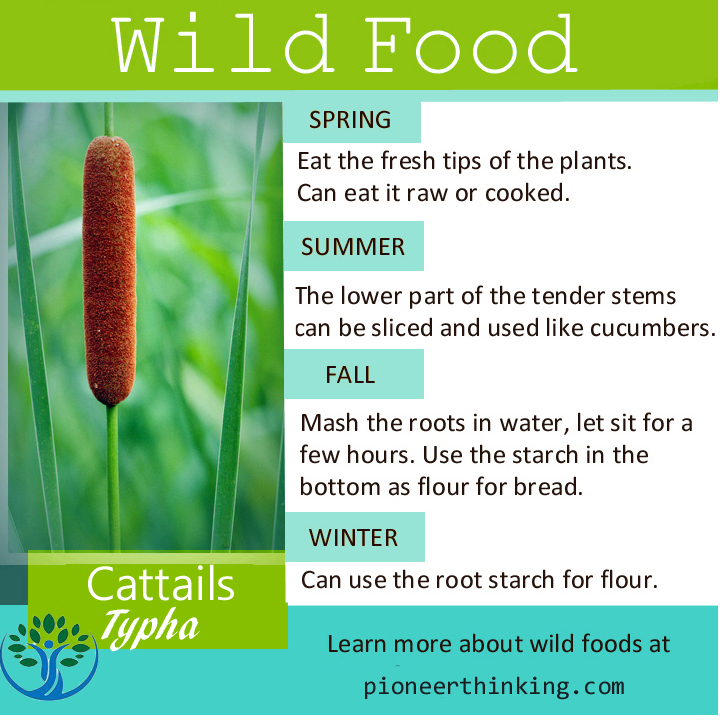Cattails, also known as “bulrushes,” are a common plant found in wetlands and marshy environments all over the world. These tall, grass-like plants can reach six feet or more in height and have distinctive cylindrical flowers that can be used to make flour, while the roots are edible and make a nutritious food source.
If you’re interested in using cattails as a food source, you should start by gathering them. The best time to do this is in the late summer or early fall when the plant has reached maturity. Look for cattails growing in shallow water and gather only the top few inches of the root, which will be tender and sweet.

When harvesting cattails, it’s important to be careful and use a sharp knife or pruning shears to avoid damaging the plant. You should also avoid gathering cattails from polluted waters, as they can absorb toxins from their environment.
Once you have gathered your cattails, you can start preparing them for use as a food source. The most common parts of the plant to use are the roots and the young shoots, which are tender and easy to digest. The mature flowers can also be used, but they require more processing to remove the tough outer layer before being eaten.
To prepare cattail roots for eating, start by cutting away any dead or discolored sections. Then, use a vegetable peeler or knife to remove the tough outer layer of the root, revealing the white inner core. This core can be eaten raw or cooked and has a sweet, nutty flavor.
Cattail shoots can be prepared in a similar manner to asparagus. Simply trim away any tough, woody parts and boil or steam until tender. They can be eaten plain or with butter and seasoning.
Cattail flowers require a bit more preparation. Start by removing the outer layer of the flower, revealing the starchy core. You can then grind the core into flour, which can be used in recipes like pancakes or bread.
When storing cattails, they should be kept in a cool, dry place for up to six months. The roots and shoots can be stored in a plastic bag in the refrigerator or freezer, while the flowers should be ground into flour and stored in an airtight container.
In addition to being a nutritious food source, cattails have many other uses. The dried leaves and stems can be woven into baskets or mats, while the fluffy seed heads can be used as stuffing for pillows, life jackets, or insulation in walls. The roots of cattails are also edible and can be cooked like potatoes or made into flour. Additionally, they have been used for medicinal purposes such as treating burns or wounds. Overall, cattails are a versatile and valuable plant.
The Author:
Pioneerthinking.com – Ingredients for a Simple Life.
